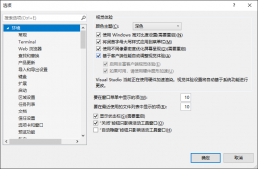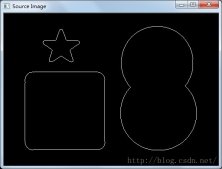函数指针是通过指向函数的指针间接调用函数。函数指针可以实现对参数类型、参数顺序、返回值都相同的函数进行封装,是多态的一种实现方式。由于类的非静态成员函数中有一个隐形的this指针,因此,类的成员函数的指针和一般函数的指针的表现形式不一样。
1、指向一般函数的指针
函数指针的声明中就包括了函数的参数类型、顺序和返回值,只能把相匹配的函数地址赋值给函数指针。为了封装同类型的函数,可以把函数指针作为通用接口函数的参数,并通过函数指针来间接调用所封装的函数。
下面是一个指向函数的指针使用的例子。
#include <iostream.h>
/*指向函数的指针*/
typedef int (*pFun)(int, int);
int Max(int a, int b)
{
return a > b ? a : b;
}
int Min(int a, int b)
{
return a < b ? a : b;
}
/*通用接口函数,实现对其他函数的封装*/
int Result(pFun fun, int a, int b)
{
return (*fun)(a, b);
}
void main()
{
int a = 3;
int b = 4;
cout<<"Test function pointer: "<<endl;
cout<<"The maximum number between a and b is "<<Result(Max, a, b)<<endl;
cout<<"The minimum number between a and b is "<<Result(Min, a, b)<<endl;
}
2、指向类的成员函数的指针
类的静态成员函数采用与一般函数指针相同的调用方式,而受this指针的影响,类的非静态成员函数与一般函数指针是不兼容的。而且,不同类的this指针是不一样的,因此,指向不同类的非静态成员函数的指针也是不兼容的。指向类的非静态成员函数的指针,在声明时就需要添加类名。
下面是一个指向类的成员函数的指针的使用的例子,包括指向静态和非静态成员函数的指针的使用。
#include <iostream.h>
class CA;
/*指向类的非静态成员函数的指针*/
typedef int (CA::*pClassFun)(int, int);
/*指向一般函数的指针*/
typedef int (*pGeneralFun)(int, int);
class CA
{
public:
int Max(int a, int b)
{
return a > b ? a : b;
}
int Min(int a, int b)
{
return a < b ? a : b;
}
static int Sum(int a, int b)
{
return a + b;
}
/*类内部的接口函数,实现对类的非静态成员函数的封装*/
int Result(pClassFun fun, int a, int b)
{
return (this->*fun)(a, b);
}
};
/*类外部的接口函数,实现对类的非静态成员函数的封装*/
int Result(CA* pA, pClassFun fun, int a, int b)
{
return (pA->*fun)(a, b);
}
/*类外部的接口函数,实现对类的静态成员函数的封装*/
int GeneralResult(pGeneralFun fun, int a, int b)
{
return (*fun)(a, b);
}
void main()
{
CA ca;
int a = 3;
int b = 4;
cout<<"Test nonstatic member function pointer from member function:"<<endl;
cout<<"The maximum number between a and b is "<<ca.Result(CA::Max, a, b)<<endl;
cout<<"The minimum number between a and b is "<<ca.Result(CA::Min, a, b)<<endl;
cout<<endl;
cout<<"Test nonstatic member function pointer from external function:"<<endl;
cout<<"The maximum number between a and b is "<<Result(&ca, CA::Max, a, b)<<endl;
cout<<"The minimum number between a and b is "<<Result(&ca, CA::Min, a, b)<<endl;
cout<<endl;
cout<<"Test static member function pointer: "<<endl;
cout<<"The sum of a and b is "<<GeneralResult(CA::Sum, a, b)<<endl;
}














